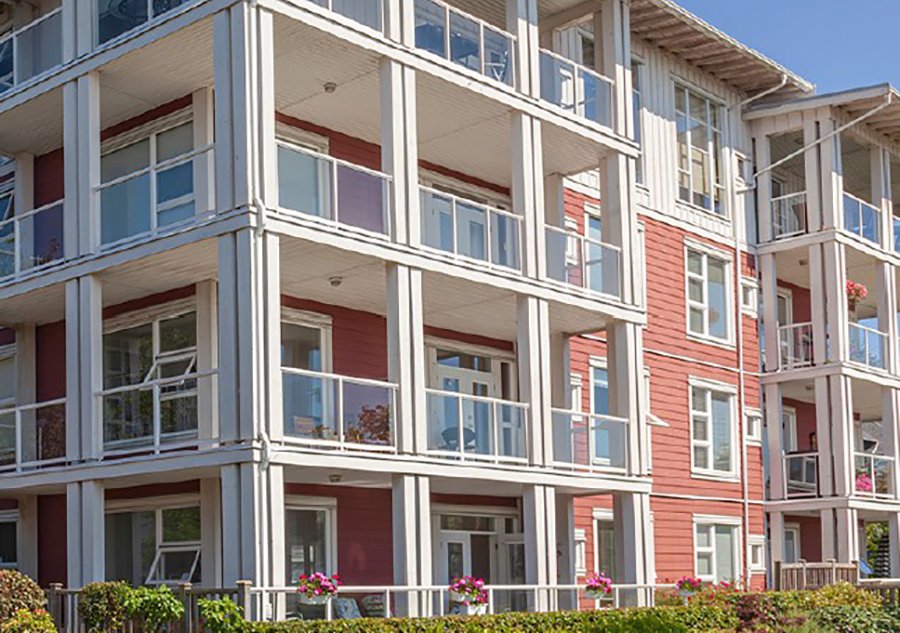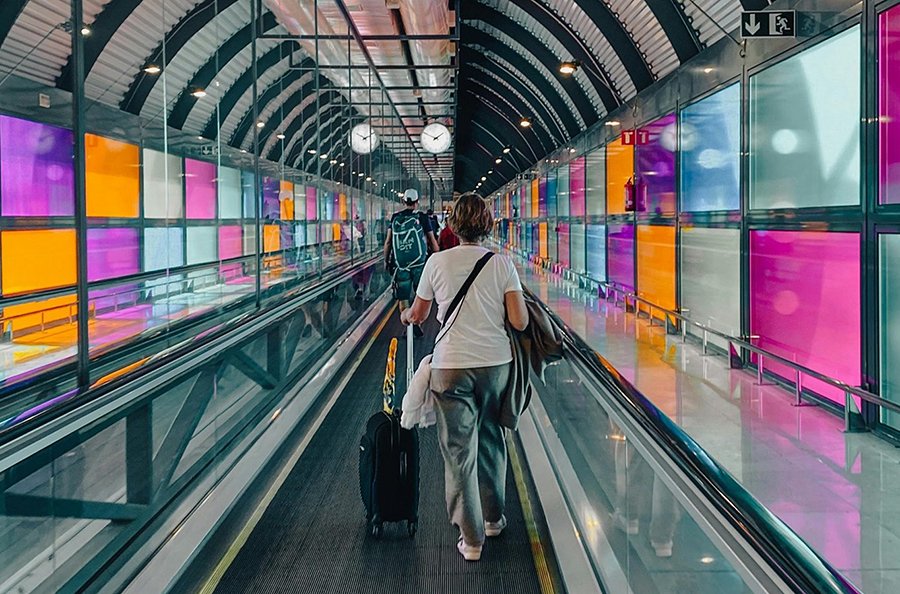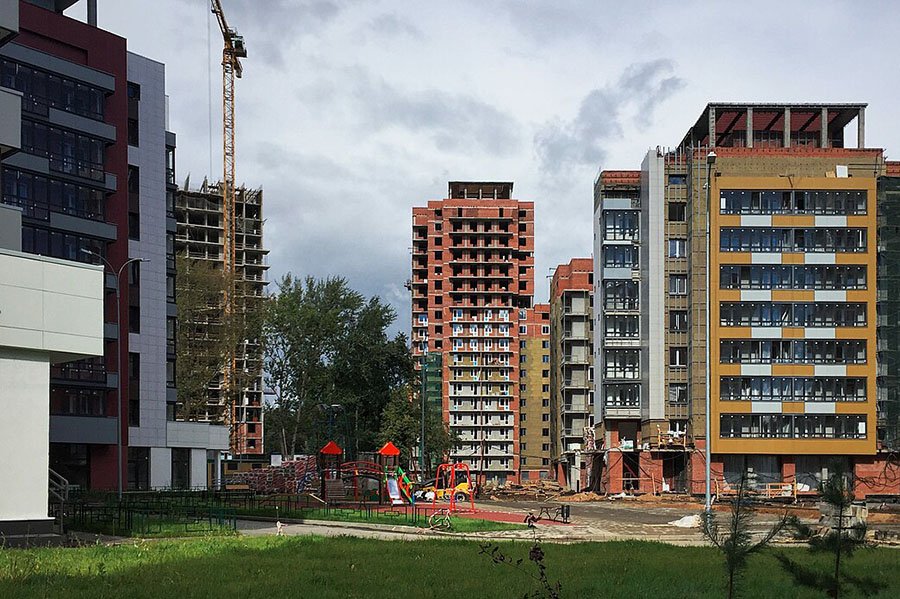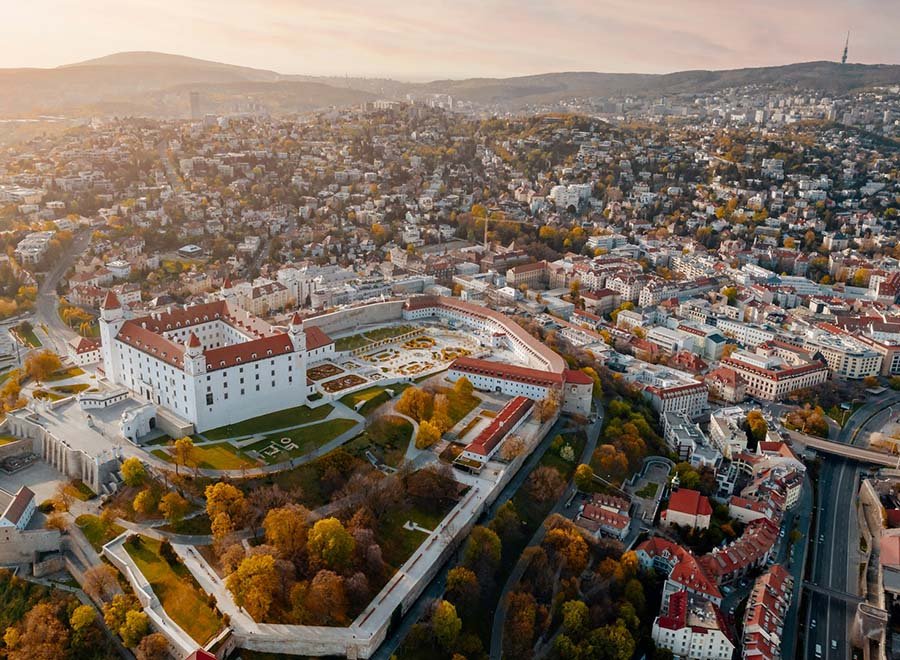читайте также
 US Aviation Chaos: 58 Cancellations and 2,674 Delays Hit Major Hubs as Thousands of Passengers Are Stranded
US Aviation Chaos: 58 Cancellations and 2,674 Delays Hit Major Hubs as Thousands of Passengers Are Stranded
 New priorities in the U.S. real estate market: from senior housing to data centers
New priorities in the U.S. real estate market: from senior housing to data centers
 Airports 2026: What Passengers Really Want — Key Global Trends
Airports 2026: What Passengers Really Want — Key Global Trends
 SLH’s Groundbreaking Sustainability CTA Report: How Verified Standards Are Changing Luxury Travel — And How Hotels and Airlines Are Responding
SLH’s Groundbreaking Sustainability CTA Report: How Verified Standards Are Changing Luxury Travel — And How Hotels and Airlines Are Responding
 Housing Prices in Russia Will Rise by 10–15% in 2027: Dom.RF Forecast
Housing Prices in Russia Will Rise by 10–15% in 2027: Dom.RF Forecast
 Toronto Joins Vancouver, Ottawa, Montréal, Québec City, and Kelowna in Raising Tourism Taxes from 2026: What Travelers Should Expect
Toronto Joins Vancouver, Ottawa, Montréal, Québec City, and Kelowna in Raising Tourism Taxes from 2026: What Travelers Should Expect
Bratislava Housing: Where to Buy an Apartment and How Much You Can Earn

Photo: Unsplash
In 2025, housing prices in Bratislava hit an all-time high: the average price reached €5,200 per sq m, notes Investropa. Over the past five years, the market is up 39%, and since 2009—by more than 200%. Yields in the city are modest, as in most European capitals.
[img]https://internationalinvestment.biz/uploads/posts/2025-09/bratislava-investicii.jpg[/img
]
]
After a brief dip in 2023, Bratislava’s housing market has been recovering confidently. Prices rose by 3% in 2024, and added another 4% in Q1 2025—the fastest pace since 2022. Experts expect a further 3–7% increase for the year. Drivers include strong demand from local and foreign buyers, limited new construction, and ongoing urban redevelopment projects.
Differences between districts are pronounced. In the historic center, Staré Mesto, prices exceed €6,000 per sq m, and tight supply makes this segment accessible mainly to affluent buyers. In Ružinov, prices range from €4,000–5,000; the area features modern residential complexes and relatively high rental yields. Nové Mesto, at €3,500–4,500 per sq m, combines diverse housing stock with improved transport accessibility.
Rača (€2,800–3,800) is a family favorite, while Lamač (€3,500–4,200) is growing thanks to new retail and residential projects. More affordable Petržalka (€2,800–3,500), despite its panel-block image, remains attractive due to transport links. Podunajské Biskupice and Vrakuňa (€2,500–3,200) offer the most budget-friendly apartments, though infrastructure there is less developed.
The rental market remains resilient. In Ružinov and Nové Mesto, two-room apartments rent for €800–1,200 per month, with yields of 4–4.5%. In Staré Mesto, rents can reach €1,500, but yields are lower—around 3.5–4%—because of the high entry price. In Petržalka, with €600–800 rents, yields can reach 5%. Tenant mix: young professionals (40%), expats (25%), students (20%), and families (15%).
Short-term rentals face tighter rules: since June 2025, all owners must register and pay an accommodation tax. In Staré Mesto, nightly rates run €60–120 with annual occupancy of 70–75%. In Ružinov and Nové Mesto, business travelers dominate at €50–90 per night. A single central apartment can gross €20–25k per year, but up to 40% is absorbed by taxes and management costs. Competition is intense: the city has more than 3,000 active listings.
The price-to-rent ratio in Bratislava is 32.8, indicating that buying generally makes sense only for long-term residence. For short stays (1–3 years), renting is usually more rational: the average rate for a two-room apartment is €900. If the living horizon exceeds five years, buying becomes more sensible.
Deal options are budget-dependent. Around €100,000 is enough for a 25–40 sq m studio on the outskirts, likely needing renovation. €200,000 buys a proper two-room apartment in Petržalka or Rača, or a smaller unit in Nové Mesto or Ružinov. With €300,000, you can access quality properties in prime districts or larger apartments in more affordable areas.
There are no market restrictions for EU citizens. Mortgages are available at 70–80% LTV. The purchase process includes a preliminary agreement with a 10% deposit, legal due diligence via the land cadastre, a technical survey, and signing the main contract with a notary. Total closing costs run 7–8% of the price.
Common buyer mistakes include underestimating inter-district differences, skipping legal checks, and ignoring additional expenses. Older buildings may require major facade and elevator repairs; properties near the Danube face flooding risks. Experts emphasize working with licensed agents and lawyers.
By European standards, Bratislava remains relatively affordable for living. Utility bills for a 70 sq m flat run €150–300 per month, groceries €250–350 per person, and a transit pass costs €36. Annual property tax is about €500. Private health insurance costs €45–100 per month, and international schools are available for expats—albeit pricey. The city is friendly to foreigners, though bureaucracy can take time.
[img]https://internationalinvestment.biz/uploads/posts/2025-09/bratislava-traty.jpg[/img]
Compared with neighboring capitals, Bratislava remains mid-priced for the region. Rental yields sit at 4–4.5%, versus Vienna’s 3–3.5%, Prague around 4%, and Budapest 4.5–5%. Meanwhile, housing in Bratislava (€5,200 per sq m) is cheaper than in Vienna (over €7,000) and Prague (about €6,000).
[img]https://internationalinvestment.biz/uploads/posts/2025-09/bratislava-dohodnost.jpg[/img
]
]
According to Global Property Guide, Slovakia’s average rental yield [leech=https://www.globalpropertyguide.com/europe/slovakia/rental-yields]fell[/leech
] from 5.29% in Q2 2024 to 4.88% in April–June 2025. In Bratislava, it is estimated at 3.92%. The top performer is a three-room apartment priced at €449,000: with a monthly rent of €1,800 it can yield 4.81%. Second is a studio in Nové Mesto for €163,000—4.42% if rented at €600.
Comparable figures include two-room apartments in Petržalka at €244,950 with €872 rent—4.27%. The same yield is recorded for three-room units in Nové Mesto (€539,450 and €1,920). In Staré Mesto, similar properties can deliver 4.20% at a price of €597,000 and rent of €2,090. Slightly lower are studios in Ružinov (€171,450 and €590)—4.13%, and studios in Petržalka (€162,500 and €550)—4.06%. Laggards are one-bed and very large apartments—2.93% to 3.68%.
Market challenges and what erodes potential returns
1) High price-to-rent multiple (P/R = 32.8). At this ratio, headline gross yields rarely exceed 4–5% and are easily eaten up by operating costs. For short horizons (1–3 years), renting is often more rational than buying.
2) Operating costs and hidden CAPEX.
— Monthly HOA/building fund charges; rising common-area maintenance tariffs;
— Preventive and capital repairs (facades, roofs, elevators), especially in older stock;
— Property insurance (higher for Danube-adjacent assets and ground floors);
— Energy upgrades (insulation, windows, MEP) to reduce utilities and improve liquidity.
3) Transaction and tax “scissors.” All-in deal costs are 7–8% of price (notary, legal, fees). Annual property tax (~€500) and levies for short-term rentals (incl. accommodation tax) reduce net yield. Management companies charge 10–25% of turnover—critical for STRs.
4) Regulatory uncertainty in short-term rentals. Since June 2025—mandatory registration and an accommodation tax; potential local limits on rates, zoning, and property standards. Any tightening directly hits occupancy and ADRs.
5) Competition and vacancy risk. With 3,000+ active STR listings, even 70–75% occupancy downtown can be hard to sustain; outside top locations, seasonality and downtime are higher. In long-term rentals, new supply and demand “migration” between districts add pressure.
6) District heterogeneity = location selection risk. The center (Staré Mesto) commands high rents but yields are compressed by expensive entry. Peripheral areas are cheaper but require careful checks on transit, infrastructure, and tenant profile.
7) Cost of debt and cash-flow stress. Mortgages (70–80% LTV for EU citizens) increase sensitivity to vacancies and rent cuts. Stress-test models for −10% rent, −10 pp occupancy, +10–15% opex.
8) Exit liquidity. Time on market, price haggling on “premium” lots, and gaps between ask and achieved prices all reduce IRR on short holding periods.
How this “cuts” returns: a quick breakdown
Example (illustrative): a two-room flat in Ružinov at €240,000 rented long-term at €1,000/month.
Gross income: €12,000/year.
Less 8% vacancy: €11,040.
Less 10% management: €9,936.
Less HOA/building fund & minor maintenance (say €90/month = €1,080): €8,856.
Less insurance (€150) and property tax (€500): €8,206.
Net yield ≈ 3.4% before capex and inflation. In STRs the topline is higher, but commissions, cleaning, platform fees, and the accommodation tax can push the net back toward the same 3–4%.
Read also:
Life and Costs in Europe in 2025: A Detailed Guide
Slovakia Changes Business Residence Rules: Caps, Visas, and Digitalization
European Real Estate Investment 2025: Colliers Study
Key Risks for the Global Economy in 2025: Knight Frank
Global Real Estate Outlook: Investors Hunt for Top Locations





